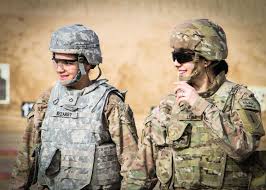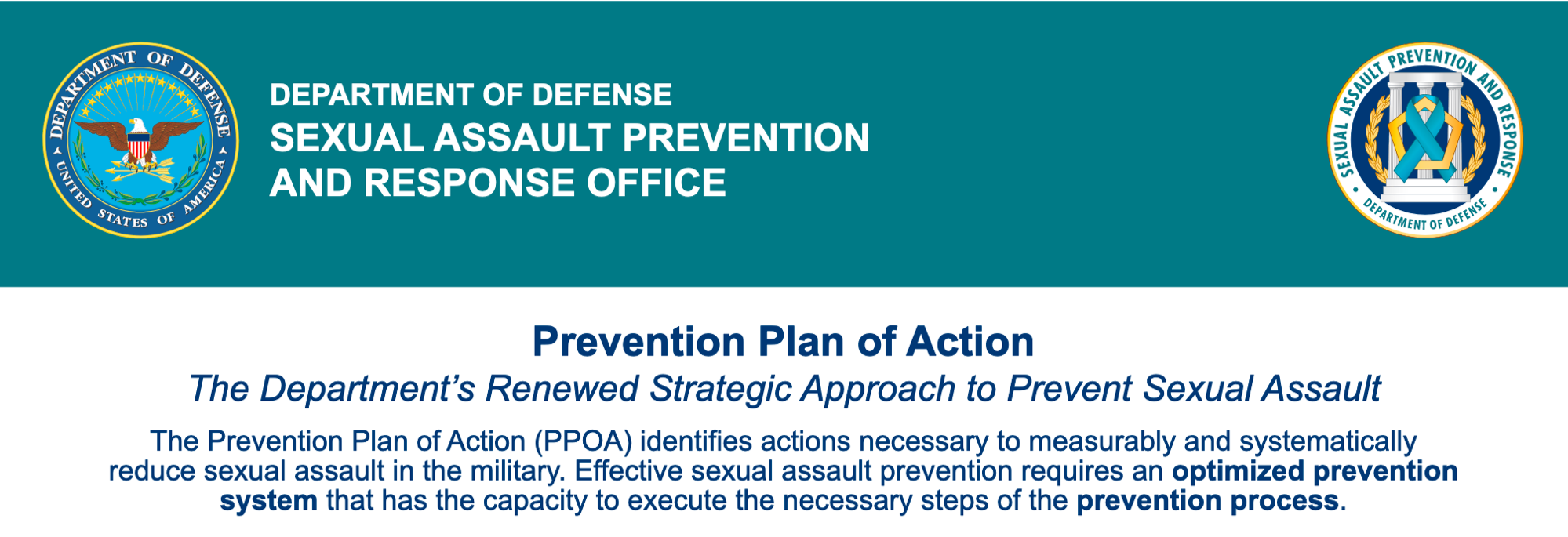What it will take to prevent sexual violence in the military

Last week’s Department of Defense’s 2018 Annual Report on Sexual Assault in the Military reported more than 37% increase of “some kind of contact or penetrative sexual assault” of service members as compared to 2016 based on data from an anonymous survey of military service members. In a memo, Acting Defense Secretary Patrick Shanahan commented on the need for action in light of these findings: “To put it bluntly, we are not performing to the standards and expectations we have for ourselves or each other.”
Responses to this report included outrage at the increase incidence of sexual violence and considerations on how the military responds to sexual assault incidents. However, this news highlights the importance of preventing sexual assault by changing the conditions in which sexual assault takes place. We must see sexual assault as preventable to make such changes. I have long believed that institutions, including the military, have the opportunity to create a culture in which sexual assault is not accepted. In order to do so, the institution must examine how it creates and reinforces its culture, and then develop a comprehensive prevention plan to change its culture.
 While the headlines focused on the increase of sexual violence, last week Department of Defense also released its Prevention Plan of Action 2019-2023. The Prevention Plan of Action recognizes the limitations of existing prevention efforts in the military, and provides a framework to increase its investment in prevention. The success of the military in reducing sexual assault depends on how well they are able to prevent it.
While the headlines focused on the increase of sexual violence, last week Department of Defense also released its Prevention Plan of Action 2019-2023. The Prevention Plan of Action recognizes the limitations of existing prevention efforts in the military, and provides a framework to increase its investment in prevention. The success of the military in reducing sexual assault depends on how well they are able to prevent it.
The report describes the current state of sexual assault prevention in the military as “[h]istorically, activities aimed at preventing sexual assault have primarily centered on raising awareness about the crime. These approaches have likely contributed to increases in victim reporting and use of support services, but civilian sector research suggests awareness programming does not translate into the kinds of long-term behavior changes required to prevent sexual violence at the organizational level.” Prevention requires more than awareness: prevention creates a culture that challenges sexual assault and the behaviors and attitudes which contribute to sexual assault. For examples, reducing sexual harassment is necessary to prevent sexual assault.
The Prevention Plan of Action has established many goals to create the human resources, infrastructure and processes necessary for effective prevention efforts.
Prevention System – Human Resources: Leadership: Leadership at all levels must be on board with the mission to prevent sexual violence. “Leaders must have a full understanding of the prevention process to support the development, implementation, and assessment of a comprehensive approach.”
Prevention System – Human Resources: Prevention Workforce: The report calls for a trained equipped and resourced workforce. When staff are given both prevention and response responsibilities, historically it has resulted in building a sound response system at the expense of a prevention system. Therefore attention must be made not only to build prevention skills but to have prevention professionals overseeing prevention activities.
Prevention System – Collaborative Relationships: The report calls for build collaborative relationship with prevention efforts on other topics. In addition, sexual violence prevention efforts can be strengthen by collaborating with local, state and national civilian sexual violence prevention efforts to build cohesive prevention messages and programs that will reinforce each other.
Prevention System – Infrastructure: Data: In order to make a difference, we must know what is working and what is not having a impact. “The department must develop a dedicated and sustainable program of research to better understand factors that contribute to sexual assault, methods to identify prevention factors that mitigate those factors and prevention metrics.”
Prevention System – Infrastructure: Resources: Effective prevention requires an investment in prevention. “The Department must advance and align budgets related to sexual violence to reflect the Departments stance toward increased prevention efforts.” But this investment in prevention cannot come at the expense of response to sexual assault. “Resourcing prevention activities must be undertaken in a way the does not diminish or degrade sexual assault response capabilities.
Prevention System – Infrastructure: Policy: “Existing sexual assault policies focus primarily on the response system, leaving prevention roles and requirements unarticulated.” Policy can establish responsibilities, standards, training requirements, and align with other interrelated issues. As a result, “[P]revention policies are also powerful tools to establish environments where sexual assault is less likely.”
Prevention Process – Comprehensive Approach, Quality Implementation and Continuous Evaluation: By identifying changes for individuals, at the interpersonal level and in the organization itself, implementing high quality programming and continually evaluating for effectiveness and to improve performance, prevention can be successful.
It is important to learn lessons from previous prevention work in both military and non-military settings to strengthen prevention efforts. Advancing prevention cannot be done alone; it requires a community to learn with each other and from each other. As we have for the last 14 years, PreventConnect is an online gathering of prevention practitioners. Thousands of people share their experiences doing prevention work, learn about the newest prevention resources and research, and strength the collective knowledge of how prevention works. PreventConnect will continue to share resources and lessons learned in the practice of sexual violence prevention. We welcome those working to prevent sexual violence in all settings, including the military, to participate in PreventConnect activities in order to develop, implement, evaluate and strengthen their prevention practices.
